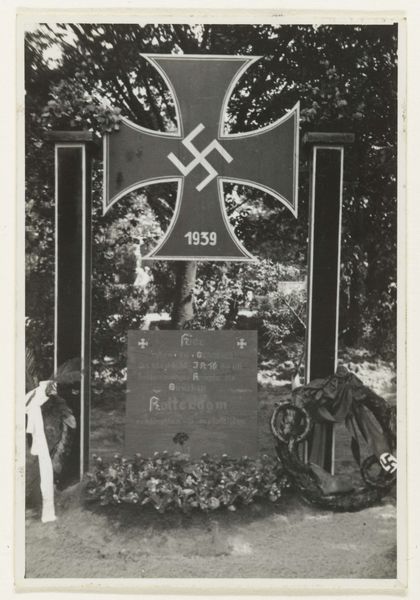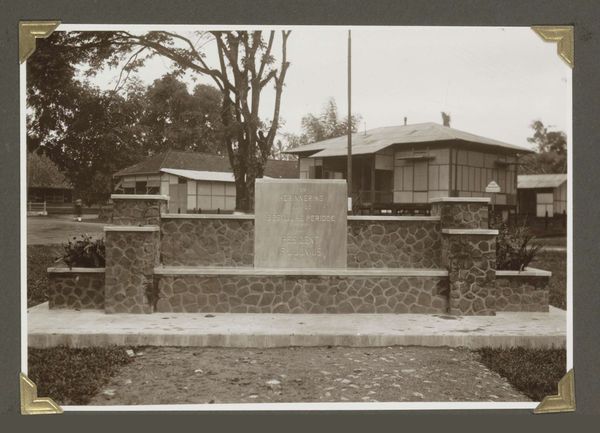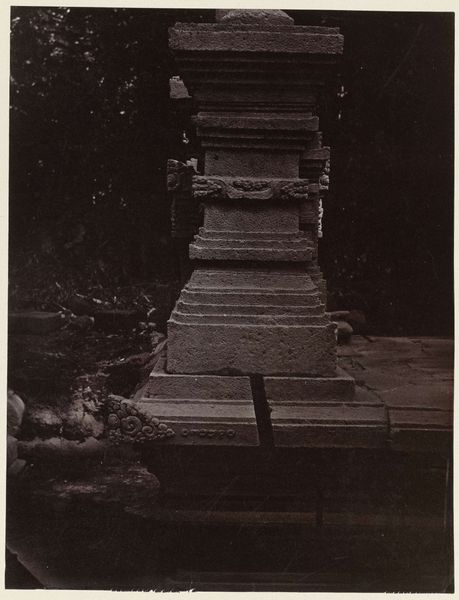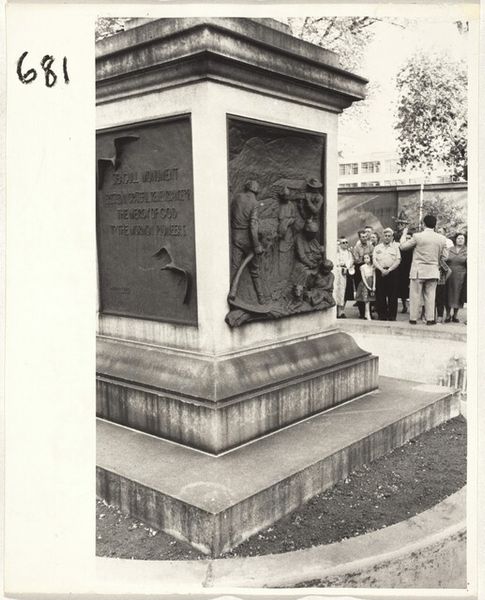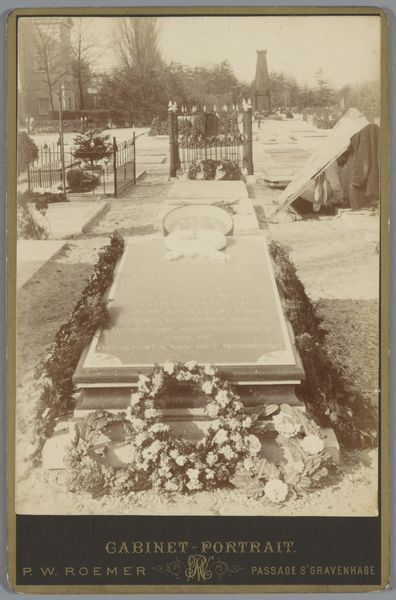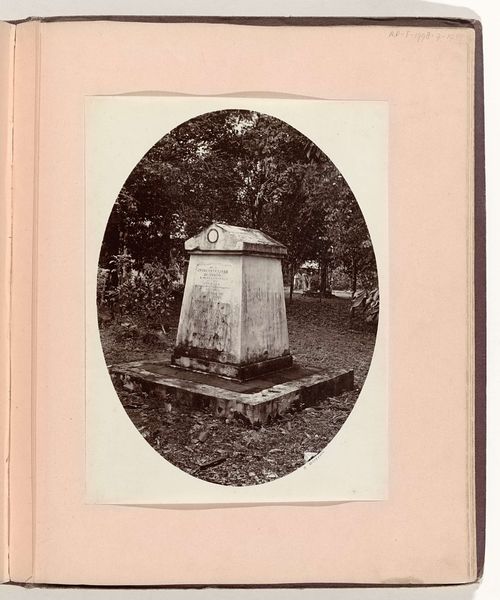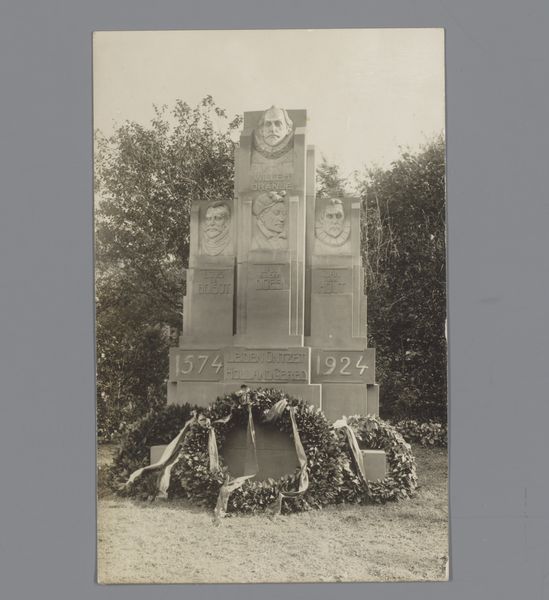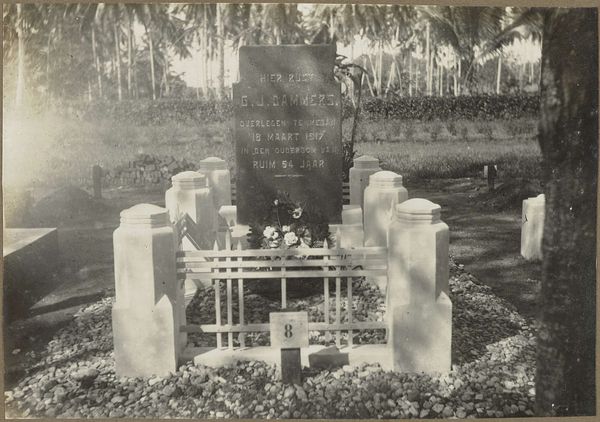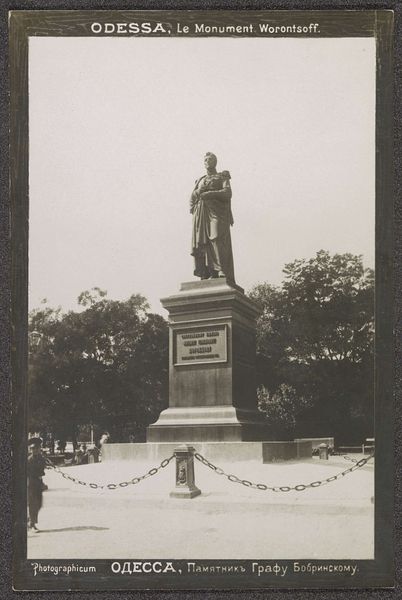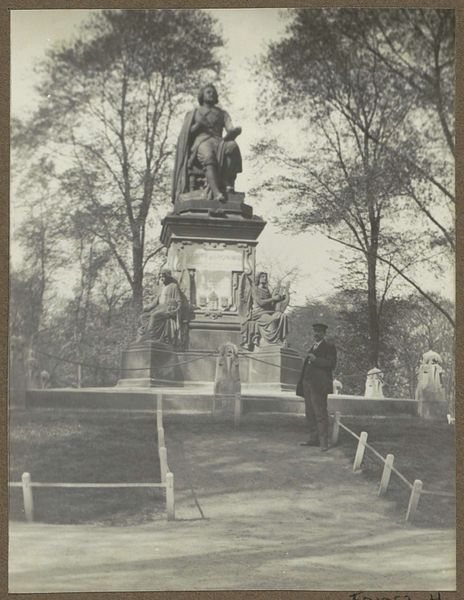
Vernield beeld van de toneelschrijver Herman Heijermans Possibly 1940 - 1966
0:00
0:00
anonymous
Rijksmuseum
print, photography, sculpture
#
portrait
#
print photography
# print
#
landscape
#
photography
#
sculpture
#
monochrome photography
#
modernism
#
realism
#
monochrome
Dimensions: width 18 cm, height 19.5 cm
Copyright: Rijks Museum: Open Domain
Curator: What a strangely compelling image. It feels like a graveyard of artistic ambition. Editor: Indeed. The Rijksmuseum holds this black and white photograph, titled "Vernield beeld van de toneelschrijver Herman Heijermans," which translates to "Destroyed statue of the playwright Herman Heijermans." Its date is estimated between 1940 and 1966. What strikes me is the sheer sense of abandonment. Curator: Precisely. You see the toppled fragments, the disjointed head, the carved name looming behind it all. Heijermans was a significant figure, a playwright known for his social dramas, so to see his monument in this state speaks volumes about the mutability of fame and remembrance. It has a strong sense of iconoclasm, doesn't it? Editor: It does. It makes one consider how political winds shift, and how public figures, once celebrated, can fall from grace, sometimes even to the point of physical desecration. Who was it that documented this fallen statue? The story behind the lens might reveal why and when it happened, but also how it reflects back upon society at large. The destruction and subsequent record seem important. Curator: We can perhaps imagine multiple layers here. First, there's the initial act of vandalism, suggesting a rejection of Heijermans' values or perhaps even a broader cultural upheaval. Then, the photograph itself acts as a form of preservation. The image is presented in grayscale which renders an objective feel in documentary aesthetics, as if to archive some cultural decay that once was considered precious and worthy of memorializing. Editor: The composition only amplifies this tension, in my view. The fragmented statues appear almost discarded, mixed with building materials behind the towering stele and the artist's name engraved upon its frontispiece. The bust looks disfigured, as if screaming into nothingness! Curator: It almost suggests a sense of collective amnesia. What was once celebrated is now broken and forgotten. The image offers a silent commentary on the impermanence of glory, prompting us to contemplate which ideas will triumph and the narratives our monuments convey to posterity. The visual is extremely potent for doing that in just one capture! Editor: Agreed. This photograph is an interesting testament to time's passage, to how readily the symbols we create can be overturned and reinterpreted with different meaning. Curator: Indeed, and what a fitting visual emblem of how histories can be rewritten through various iconographies and cultural attitudes.
Comments
No comments
Be the first to comment and join the conversation on the ultimate creative platform.
